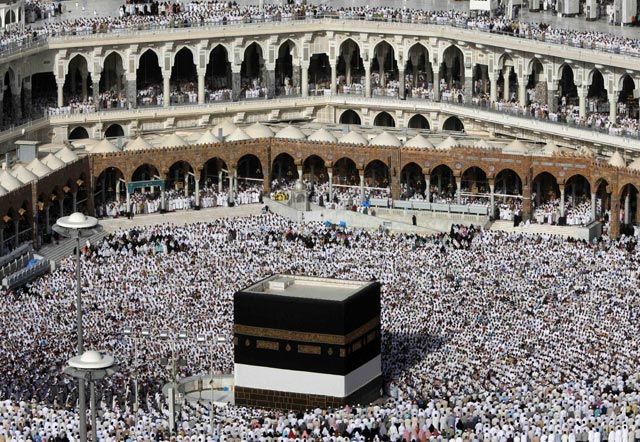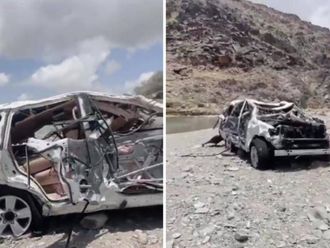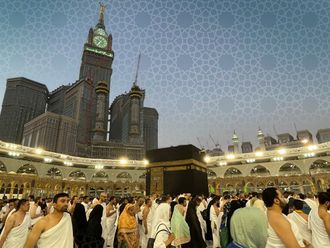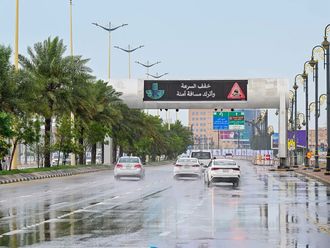Makkah: The Mina Valley, which is a desert location situated some five kilometres to the east of Islam's holiest shrine, has now turned into a huge white tent city with all the facilities and utilities for some three million people.
Mina covers an area of 650 hectares consisting of vast plains, valleys and mountains. It is surrounded by high and steep mountains in the north and south and by Wadi Muhasar in the east.
The "One-Week City" has snatched the attention of both Muslim and non-Muslim observers worldwide. They expressed their astonishment at the electrifying effect of the city in the minds of millions of Muslim pilgrims. This remains an uninhabited desert valley for the entire year except for a couple of days in the last Hijri month of Dhu Al Hijja. It is also wonderful that no epidemic or contagious diseases hit the valley among the millions of pilgrims, who assemble in this narrow valley throughout the ages.
Features
The government has spent nearly 25 billion Saudi riyals (Dh24.47 billion) in developing this desert valley into a modern city. Mina now has 40,000 durable Teflon-coated fireproof tents with cooling systems, state-of-the-art communication facilities that include flyovers and tunnels, and water and electricity networks. The 10-billion-riyal City is the first ever in the world to be fully fire-proof, in a way preserving spirituality of the place. In addition, it contains all the necessary services, and thus setting an example for excellence in the area of urban projects.
Mina contains a number of important Islamic landmarks including the Jamrat, where pilgrims stone the Satan. The historic Al Khaif Mosque is only 100 metres away from the Jamrat area, while a number of hospitals and health centres and other amenities are close by.
The Jamrat Bridge, 950 metres long and 80 metres wide, comprises five levels and cost over 4.5 billion riyals to build. The bridge was constructed in such a way so in future it can be built as high as 12 levels, accommodating five million pilgrims at once. The bridge has three tunnels, 11 entry and 12 exit points, a helicopter airfield and a cooling system that sprinkles water droplets, keeping the temperature at a maximum of 29 degrees Celsius.
Other facilities include groceries, restaurants, barbershops, toilets, medical services and others. The bridge is monitored by close-circuit cameras, enabling security forces to intervene immediately in case of emergency.
The pilgrims perform the stoning ritual at Jamrat during Haj. They pelt stones at three pillars representing Satan, commemorating the stoning by Prophet Ebrahim at the devil, who tried to tempt him to disobey God by trying to convince him to not sacrifice his son.














